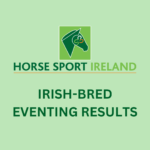Horse Sport Ireland Stallion and Mare Inspection and Classification System
- 5 November 2015, 11:14
See below extract from a statement by Jim Beecher, Chairman of the Breeding Sub-Board of Horse Sport Ireland and the Irish Horse Board, to the Annual General Meeting of the Irish Horse Board Society Limited in the Hotel Kilmore, Cavan on 3rd November 2015.
Horse Sport Ireland Stallion and Mare Inspection and Classification System
The guiding principle driving the Breeding Sub-Board and the Irish Horse Board over the years has been ‘to act always in the interest of breeders’. All our programmes and the operation of the studbooks are carried out in the interest of breeders. The stallion inspection scheme has been in operation since the foundation of the studbook and has undergone many modifications over the years. Great efforts have been made to improve transparency and relevance.
The principle of inspecting horses for classification in a Studbook is based on identifying the best potential stallions at a young age, in anticipation that breeders will use these stallions thereby speeding up genetic improvement within the population. An initial look at the level of coverings by stallions who met the inspection requirements, those who did not and indeed those stallions who did not come out for inspection at all, raises questions about the impact the stallion inspection system is having on our breeding programme.
A lot of resources are invested in the inspection regime(s) and we need to question if these resources can be put to better use. The reality is that the Sport Horse industry is changing rapidly and that the key influence on the breeder’s choice of stallions is, as it should be, the performance of stallions and their progeny in open competition. In the information age, global competition results are now much more freely available to breeders who as always make up their own mind on what stallions to use on their mares. With the use of AI, embryo transfer and cloning being allowed in sport horse breeding, mare owners have access to bloodlines from all over the world.
Many breeders place great value on stallions having met studbook veterinary requirements and this is something we need to keep firmly in mind. I realise also that the Irish Draught Horse Studbook, as a closed Studbook, is very different to the Irish Sport Horse Studbook and what might be appropriate in one might not be in the other. We separated the inspection regimes in 2009, which was a big step forward.
The recent industry Strategic Plan ‘Reaching New Heights’ called for a ‘radical rebuilding of our existing breeding infrastructure’. Stallion Inspections have been a cornerstone of that infrastructure for decades and we have had great success over this time, particularly in the breeding of event horses. However, we need to assess what role they have to play in the future.
We owe a great debt of gratitude to our stallion inspectors who carry out their job with great integrity and expertise. Wherever you have people making decisions about the classification of other people’s horses you will naturally have a level of disappointment. However, I have full confidence in what our inspectors do and how they do it.
A new inspection regime was introduced in 2009 which improved the transparency of the system. We decided to review it again this year and while a lot of work has been put into reviewing the finer details of the system, fundamental questions have been raised in the Inspections Working Group and elsewhere. What I want to initiate today is a conversation here and in the broader industry on the merits of stallion inspections. I want us to focus on the wider issue of the merits of inspections rather than on the finer details of how they are carried out. We must seek the views of breeders, both stallion owners and mare owners. We will also have to discuss this with our colleagues in the Northern Irish Horse Board (NIHB). We
can advertise for submissions as soon as possible and we will consider these carefully before making any decisions.
To give time for consideration of the views and concentrate all of our minds, we do not intend to hold the full stallion inspection round next spring as in previous years. However, we must keep in mind that some stallions may have partially completed the current process and some individual stallion owners may wish to have their stallion inspected for Approved/Class 1 status for the 2016 breeding season. We will be making appropriate
provisions for these. These arrangements, if required, will be confirmed following the next meeting of the Breeding Sub-Board at the end of November. Depending on the outcome of the consultation there may be stallion inspections in Autumn 2016.
Accordingly, the following was agreed at the HSI Breeding Sub-Board today:
- We review our inspection and classification system. What should we have?
- Seek submissions from breeders and consult widely.
- Adopt any new system by the 30th April 2016.
ENDS
- Popular

- Latest

Pender helps pay for his trip to the continent by winning good money at Chepstow
Irish Sport Horses take the Open Intermediate classes by storm at Cirencester
Irish Young Riders in action at the TRI Nations in South Africa
Update on new Advisory Forums and Director appointments process




























